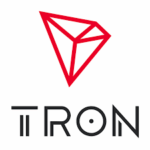We adhere to strict standards of editorial integrity to help you make decisions with confidence. Some or all links contained within this article are paid links.
Bubbles don’t always burst — sometimes they deflate. But the process can still be painful, as some Florida home sellers are now discovering.
According to a Bloomberg analysis of Redfin data, the number of contracts to buy homes in Miami, Fort Lauderdale and West Palm Beach dropped in April compared to a year ago, marking the steepest declines among the 50 largest metro areas in the U.S.
Don’t miss
- I’m 49 years old and have nothing saved for retirement — what should I do? Don’t panic. Here are 6 of the easiest ways you can catch up (and fast)
- Robert Kiyosaki warns of a ‘Greater Depression’ coming to the US — with millions of Americans going poor. But he says these 2 ‘easy-money’ assets will bring in ‘great wealth’. How to get in now
- Gain potential quarterly income through this $1B private real estate fund — even if you’re not a millionaire. Here’s how to get started with as little as $10
Notably, pending sales in Miami plunged 23%, while transactions in Fort Lauderdale and West Palm Beach declined by 19% and 14%, respectively.
According to Chen Zhao, head of economics research at Redfin, the region is clearly under pressure.
“South Florida is the epicenter of housing market weakness in the United States,” she told Bloomberg.
Homes are also sitting on the market much longer than elsewhere. In April, the median time to sell in West Palm Beach and Fort Lauderdale was 83 days, and 81 days in Miami — more than double the national average of 40 days.
South Florida saw a historic run-up in prices during the pandemic, with homes routinely selling above asking price. But the tide has turned.
In April, the median home sale price across Florida fell 3.2% year over year. And in West Palm Beach, Miami and Fort Lauderdale, nearly 5% of homes sold below asking — compared to just 0.77% nationally.
“I think you’re seeing a really long, slow deflation of that bubble,” Zhao said in the Bloomberg analysis, reflecting on the shifting market dynamics.
And while Florida may be feeling the pain, Zhao cautions it might not be the only state that ends up struggling: “The question for the rest of the country is, will this spread? Florida is uniquely bad right now.”
‘Not enough housing’
Florida’s housing market seems to be under pressure, but that doesn’t necessarily signal a nationwide collapse. In fact, according to Redfin, the median U.S. home sale price in April was $437,864 — up 1.3% from a year earlier.
Zoom out further, and the long-term trend remains clear: Redfin data show U.S. home prices have surged roughly 45% over the past five years.
Affordability, however, remains a major challenge due to the imbalance between supply and demand. As Federal Reserve Chair Jerome Powell acknowledged in a press conference last year, the real issue behind America’s housing crisis is clear: “We have had, and are on track to continue to have, not enough housing.”
A June 2024 analysis by Zillow estimates the U.S. housing shortage at 4.5 million homes — a gap that continues to support demand and rental prices in many regions.
Meanwhile, many investors view real estate as a time-tested hedge against inflation. As the cost of materials, labor and land rises, property values often follow — and so do rents. This allows landlords to earn income that tends to keep pace with inflation.
Of course, with today’s high home prices, elevated mortgage rates and an uncertain outlook, jumping into the market might feel daunting. But the good news is, you no longer need to buy a property outright to tap into the benefits of real estate investing.
For accredited investors, Homeshares gives access to the $36 trillion U.S. home equity market, which has historically been the exclusive playground of institutional investors.
With a minimum investment of $25,000, investors can gain direct exposure to hundreds of owner-occupied homes in top U.S. cities through their U.S. Home Equity Fund — without the headaches of buying, owning or managing property.
With risk-adjusted internal returns ranging from 14% to 17%, this approach provides an effective, hands-off way to invest in owner-occupied residential properties across regional markets.
Another option is First National Realty Partners (FNRP), which allows accredited investors to diversify their portfolio through grocery-anchored commercial properties, without taking on the responsibilities of being a landlord.
With a minimum investment of $50,000, investors can own a share of properties leased by national brands like Whole Foods, Kroger and Walmart, which provide essential goods to their communities. Thanks to Triple Net (NNN) leases, accredited investors are able to invest in these properties without worrying about tenant costs cutting into their potential returns.
Simply answer a few questions — including how much you would like to invest — to start browsing their full list of available properties.
Read more: Want an extra $1,300,000 when you retire? Dave Ramsey says this 7-step plan ‘works every single time’ to kill debt, get rich in America — and that ‘anyone’ can do it
Hedge against chaos
If you’re uneasy about where the U.S. housing market — or the broader economy — is headed, you’re not alone. Warnings from top economists and investors are piling up.
Nobel Prize–winning economist Paul Krugman has cautioned that a recession could hit the U.S. this year. Meanwhile, Ray Dalio — founder of the world’s largest hedge fund, Bridgewater Associates — recently sounded the alarm on “something worse than a recession.”
With soaring national debt, persistent fiscal deficits and rising geopolitical tensions, it’s no surprise that markets have been on edge. So where can investors turn for shelter?
Dalio points to a familiar safe haven: gold.
“People don’t have, typically, an adequate amount of gold in their portfolio,” he told CNBC in February. “When bad times come, gold is a very effective diversifier.”
Long viewed as the ultimate safe haven, gold isn’t tied to any single country, currency or economy. It can’t be printed out of thin air like fiat money, and in times of economic turmoil or geopolitical uncertainty, investors tend to pile in — driving up its value.
Hence why, over the past 12 months, gold prices have surged by more than 40%.
One way to invest in gold that also provides significant tax advantages is to open a gold IRA with the help of Priority Gold.
Gold IRAs allow investors to hold physical gold or gold-related assets within a retirement account, thereby combining the tax advantages of an IRA with the protective benefits of investing in gold, making it an option for those looking to help shield their retirement funds against economic uncertainties.
When you make a qualifying purchase with Priority Gold, you can receive up to $10,000 in silver for free.
What to read next
- JPMorgan sees gold soaring to $6,000/ounce — use this 1 simple IRA trick to lock in those potential shiny gains (before it’s too late)
- This is how American car dealers use the ‘4-square method’ to make big profits off you — and how you can ensure you pay a fair price for all your vehicle costs
- Here are 5 ‘must have’ items that Americans (almost) always overpay for — and very quickly regret. How many are hurting you?
- How much cash do you plan to keep on hand after you retire? Here are 3 of the biggest reasons you’ll need a substantial stash of savings in retirement
Like what you read? Join 200,000+ readers and get the best of Moneywise straight to your inbox every week. Subscribe for free.
This article provides information only and should not be construed as advice. It is provided without warranty of any kind.



